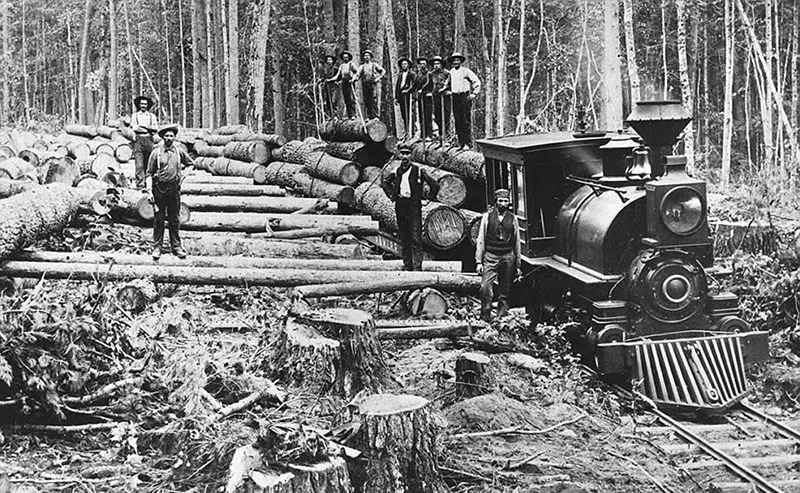The Pacific Northwest and California are home to some of the largest trees on Earth.
Giant sequoias can grow up to 311 feet tall, and coastal redwoods can reach 370 feet. These trees can have diameters from 16-20 feet, sometimes even 30 feet. Sitka spruces are also impressive, standing between 120-180 feet tall.
These ancient giants existed for thousands of years and were known to local American Indian communities before the lumber industry arrived in the 1800s.
The logging industry expanded throughout the 19th century, not just for trade but also for the demand for lumber for WW1 aircraft.
Despite the tough work, the logging industry managed to cut down a vast number of these ancient trees. By 1900, about one-third of old redwood forests were gone; by the 1960s, 90 percent had been destroyed.
Some of this logging work was captured in photographs. There are remarkable images showing loggers posing inside a cut tree or standing around a trunk as big as a house.
Old-school lumberjacks worked in harsh conditions
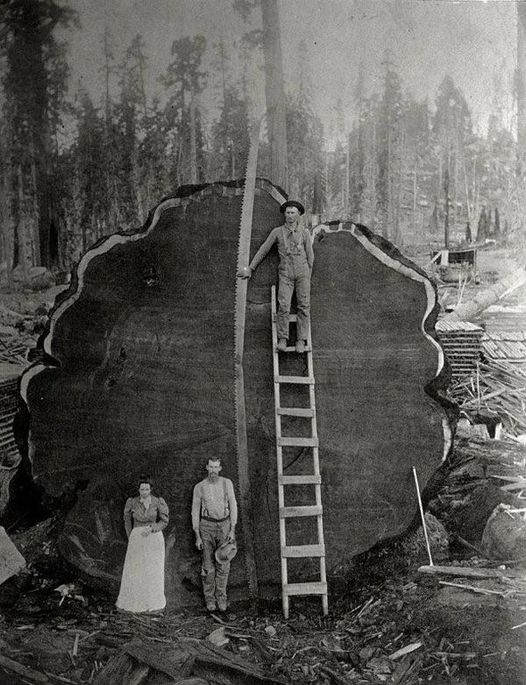
The logging industry boomed in the 1800s. By 1910, it was the top employer in Washington State. Loggers were at the forefront, tasked with cutting down massive trees by hand. Their job was both dangerous and demanding: in the early 20th century, one in every 150 loggers lost their lives.
Before chainsaws and modern machines, lumberjacks used axes and saws. The work was hard, dangerous, and didn’t pay well. They lived in rough conditions and often moved from place to place for work.
Lumberjacks stayed in camps, usually in crowded shanties or bunkhouses. These places smelled strongly of smoke, sweat, and drying clothes and were often infested with bedbugs. Camps had strict rules, often banning alcohol and even talking during meals.
Lumberjacks worked wherever there were large forests and a demand for wood. They were common in Scandinavia, Canada, and parts of the United States. Many U.S. lumberjacks were of Scandinavian descent and upheld a long-standing family practice.
How lumberjacks fell giant trees with axes
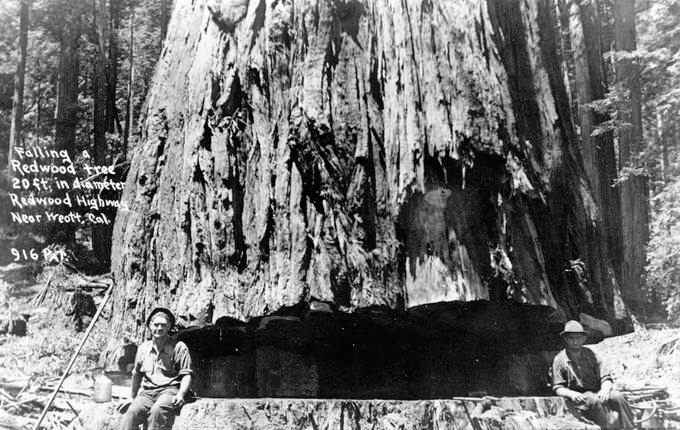
“Fallers” were the loggers who cut down trees with axes and cross-cut saws. Once a tree was down and its branches removed, a “bucker” would cut it into logs or be hauled to a railroad or river for transport.
Loggers stood on springboards placed into notches in the tree. Using crosscut saws and axes, they carefully chopped a wedge into the tree and planned where it would fall. For redwoods, it was best for the tree to fall towards water or uphill to avoid splitting the timber.
In lumber camps, workers had specific roles like whistle punk, chaser, and high climber.
The whistle punk blew a whistle to signal the yarder operator, who moved the logs. He also watched for safety, that required him to stay alert and quick-thinking.

The high climber, or tree topper, used climbing hooks and rope to climb tall trees, cutting off limbs and the top of the tree, then attaching pulleys and rigging. This turned the tree into a spar for moving logs.
Choker setters fastened steel cables to fallen logs so they could be dragged to the landing by the yarder. Chasers removed the cables once the logs arrived.
Choker setters and chasers were entry-level jobs, with experienced loggers moving up to become yarder operators, high climbers, or supervisors like hook tenders.
While many think all loggers cut trees, specialized workers called fallers and buckers did the actual felling and bucking of trees.
Vintage photographs capture the rugged lives and specialized skills of lumberjacks
1. A lumberjack and two women pose in front of a tree near Seattle, Washington 1905
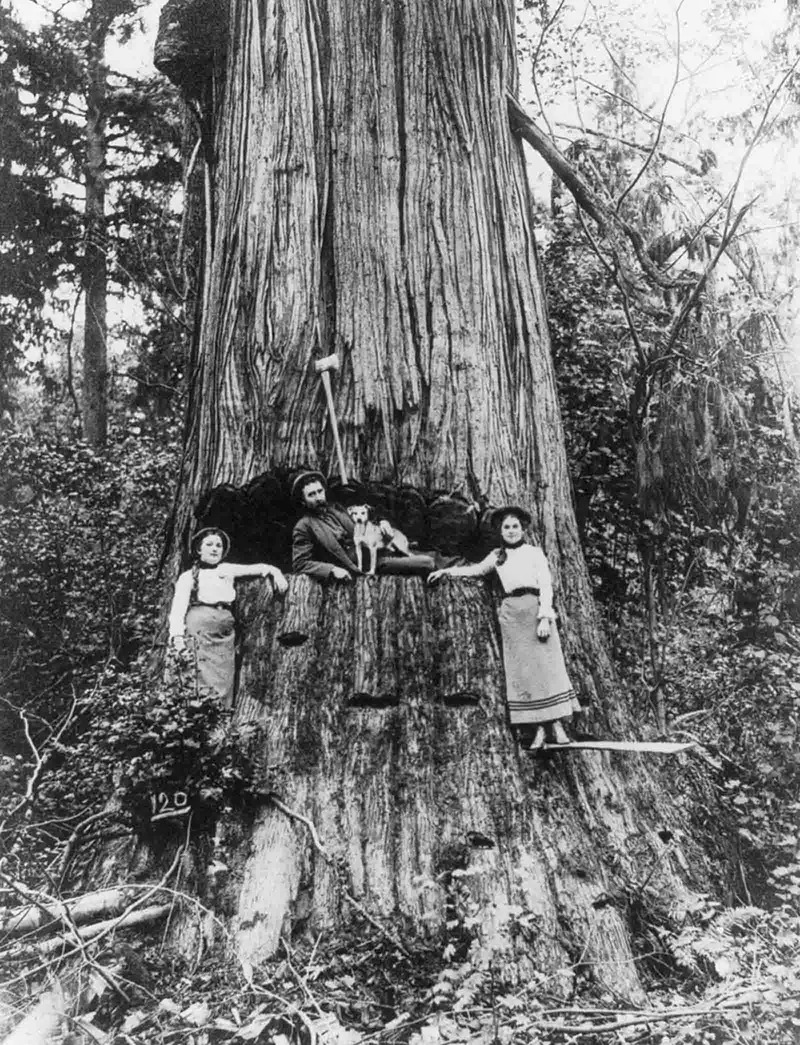
2. A lumberjack stands on a felled spruce tree, c. 1918
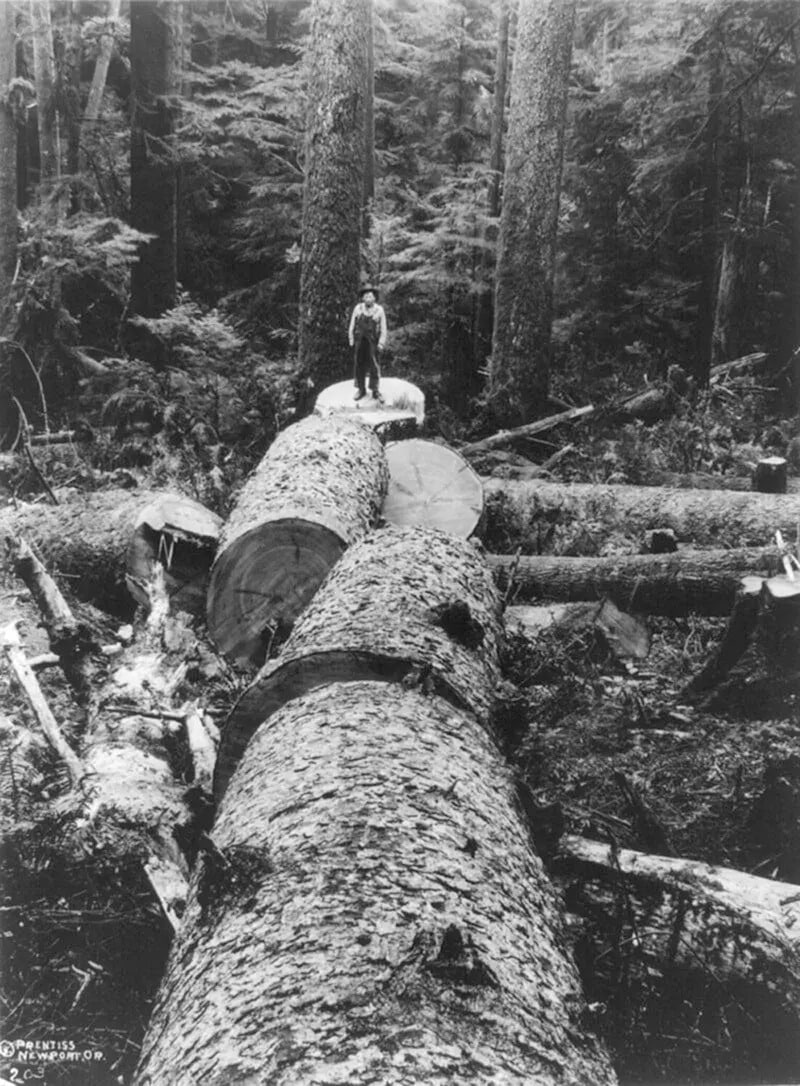
3. A group of men standing on a Spruce tree stump

4. Loggers with felled trees
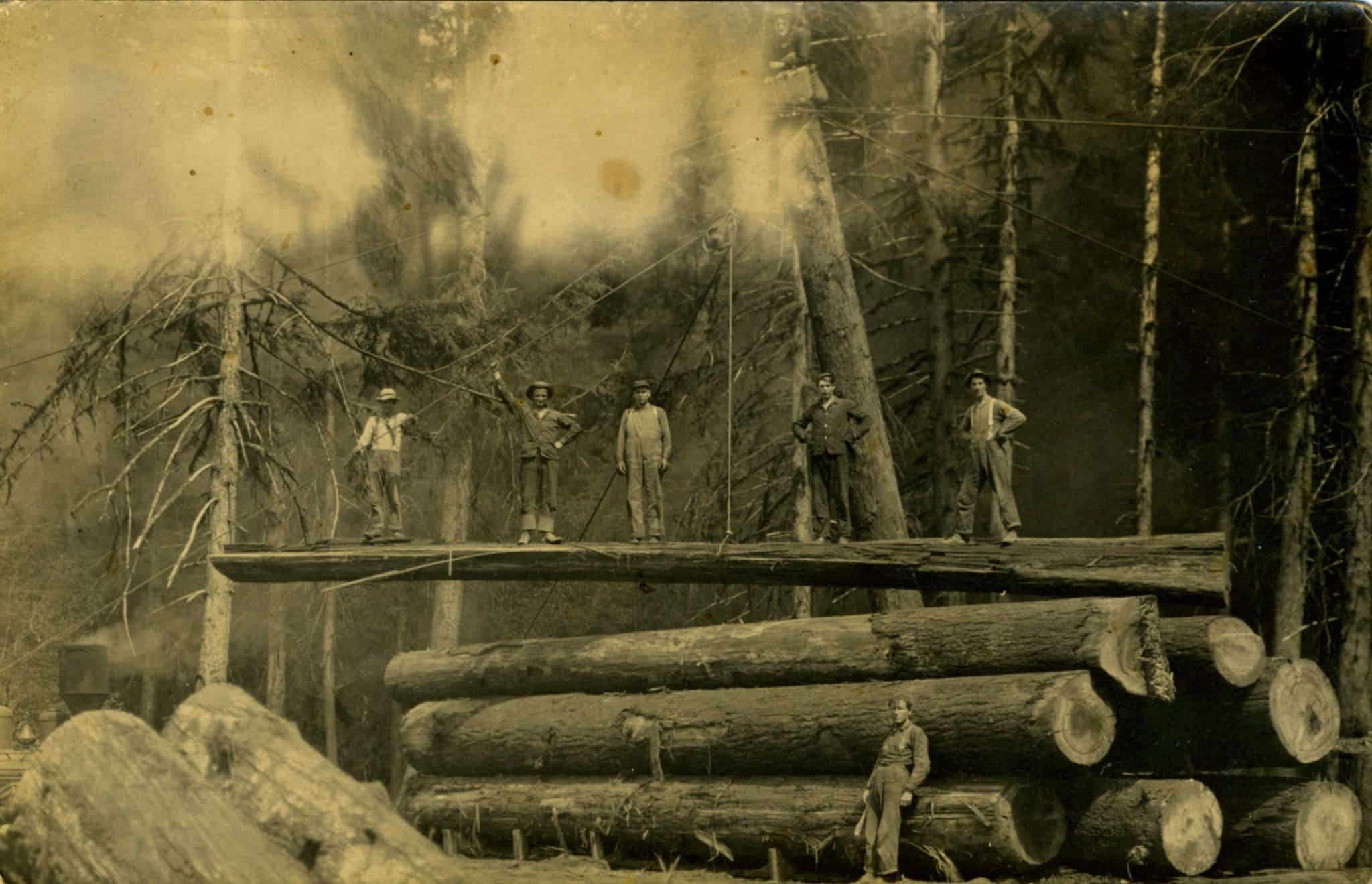
5. Loggers hold a cross-cut saw across the trunk of a giant Sequoia tree in California, 1917
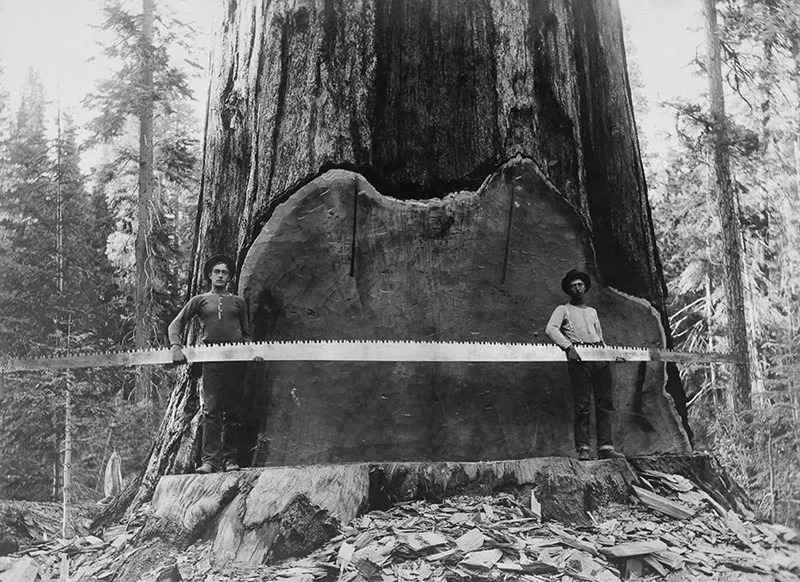
6. Lumberjacks pose with a 12-foot-wide fir tree, 1901
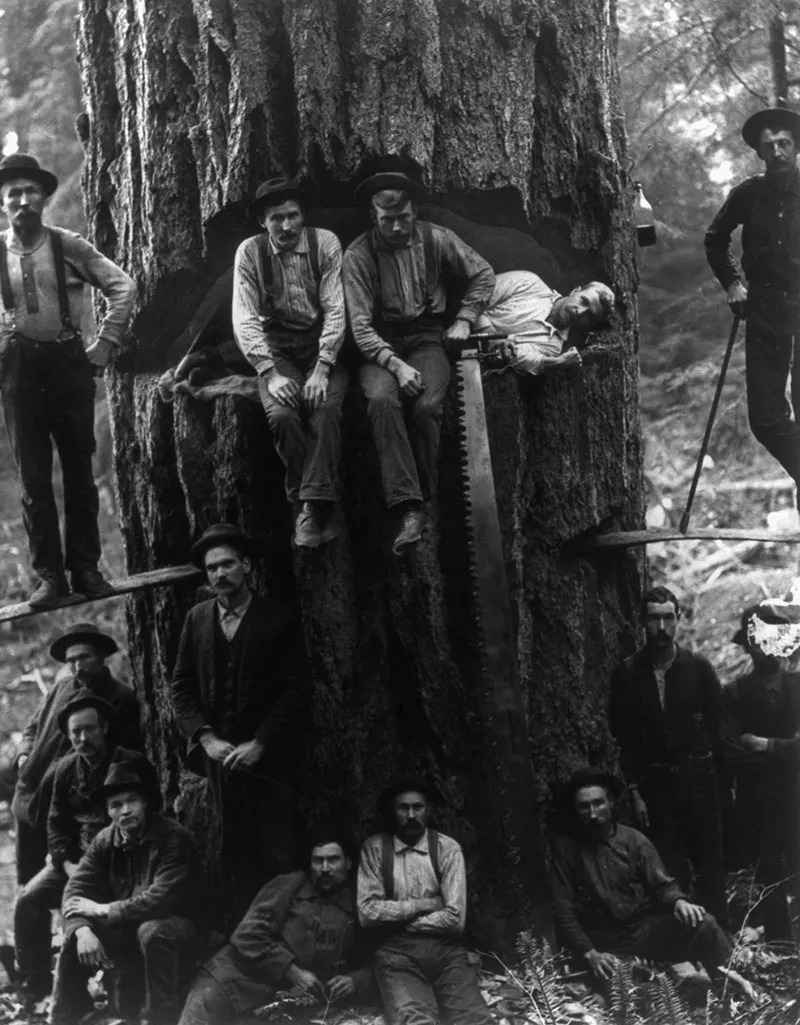
7. Loggers stand inside the trunk of a tree they chopped down at Camp Badger in Tulare County, California, 1892
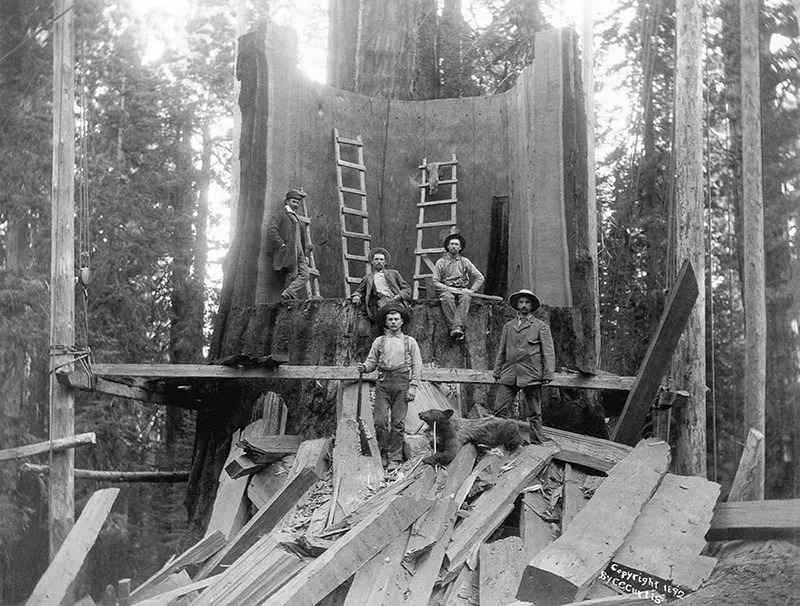
8. Loggers and a 10-mule team prepare to fell a giant Sequoia tree in California 1917

9. Loggers walk across a log jam on Minnesota’s Littlefork River 1937
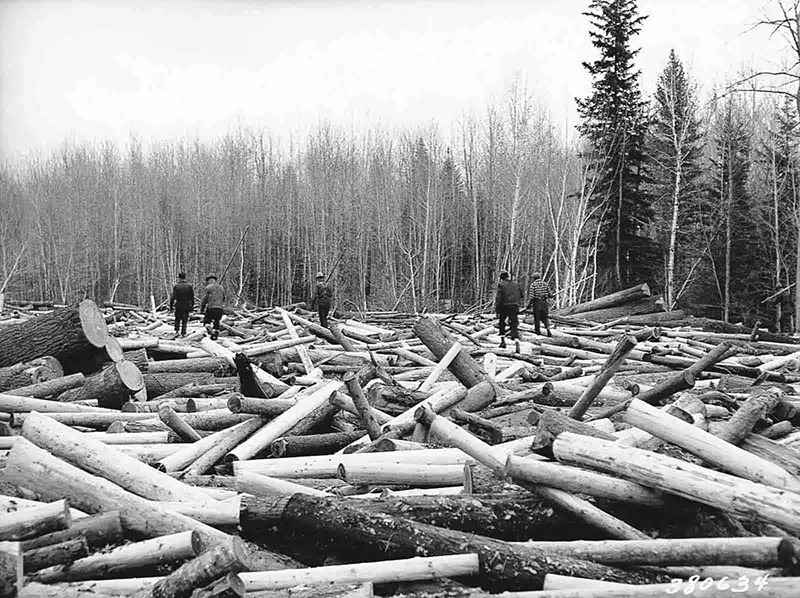
10. Over 100 people stand beside a logged giant sequoia tree in California, 1917

11. Men stand on piles of cut trees in rural New York, 1907
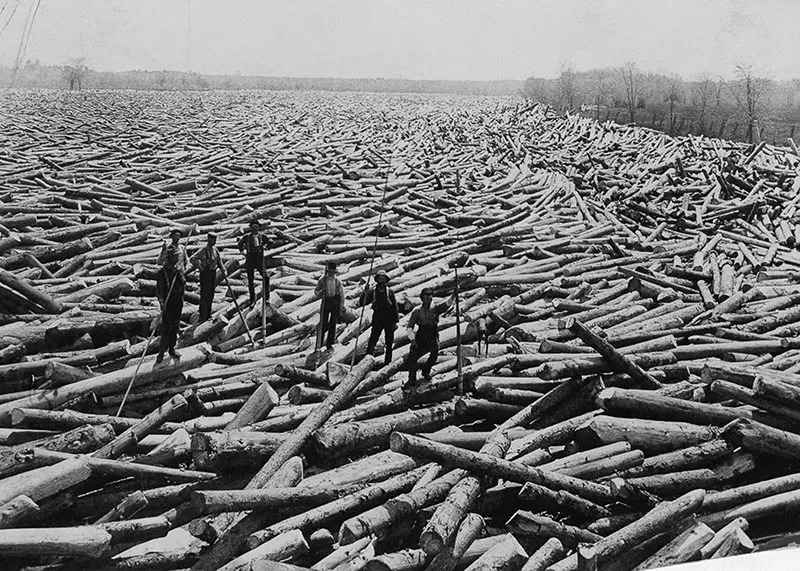
12. Lumberjacks in Washington state

13. Loggers among the redwoods in California
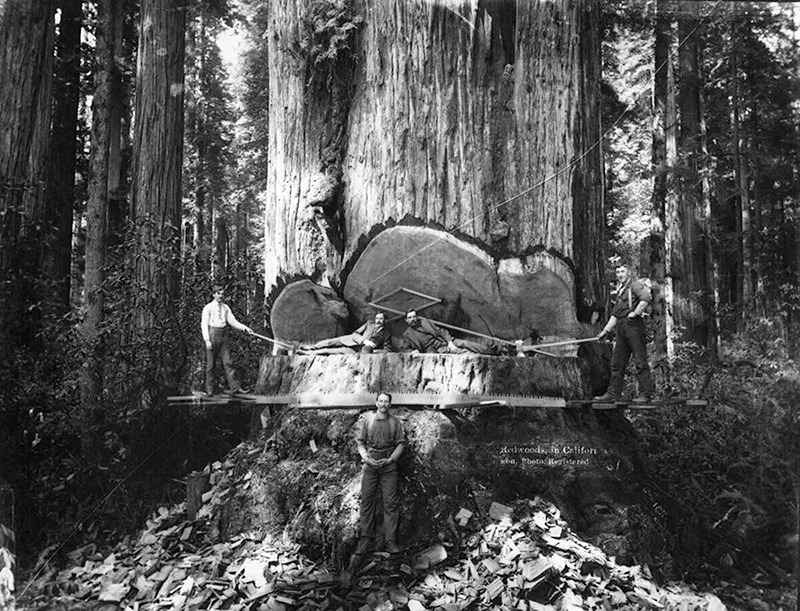
14. A lumberjack with a redwood

15. Lumberjacks almost blends in with the cut trees
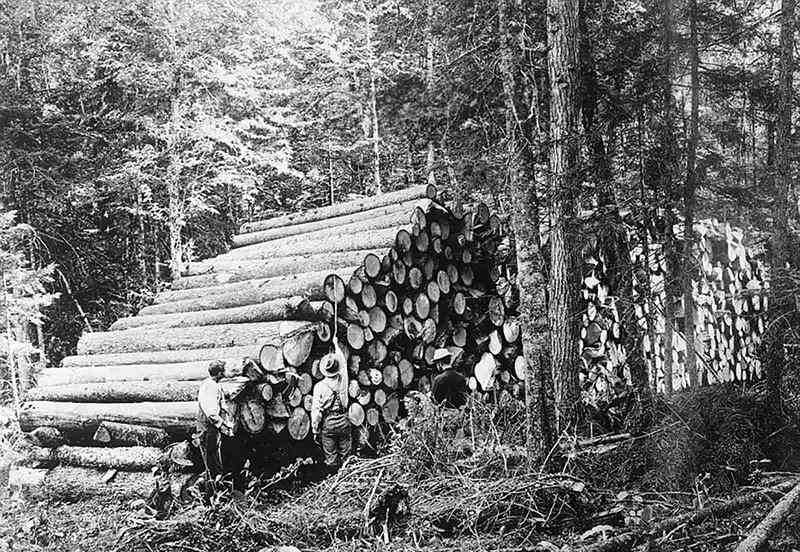
16. A felled Sequoia tree in California, c. 1900
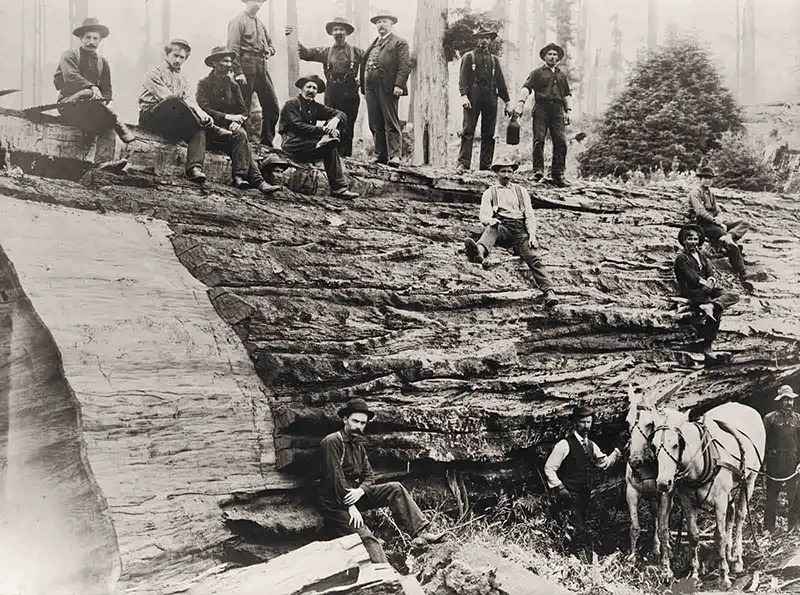
17. A group in the 1930s moves a log into a river in West Virginia
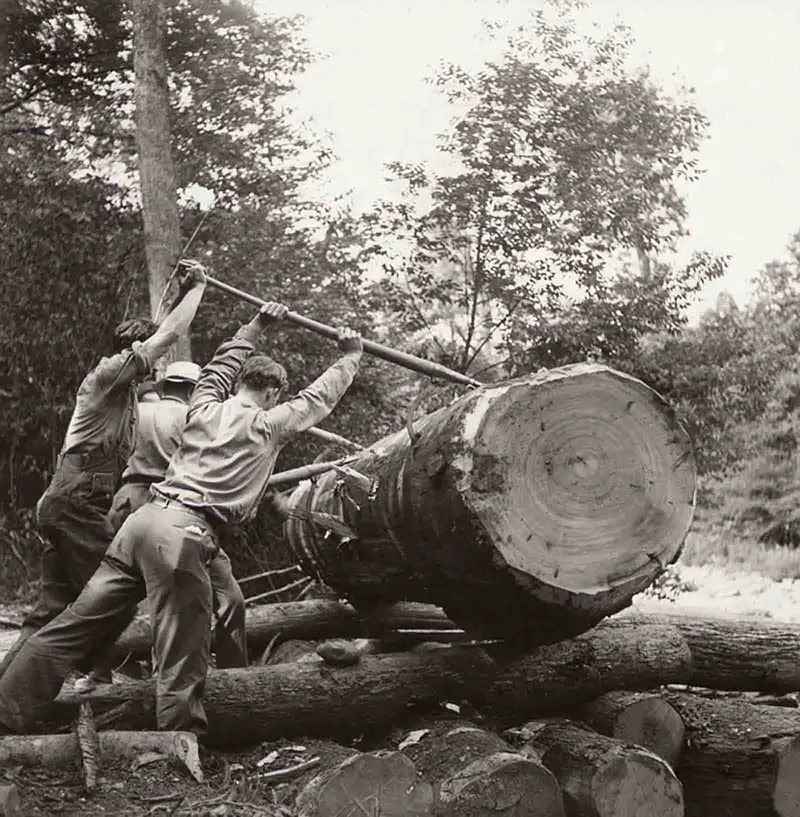
18. The lumberjacks rested between exhausting shifts
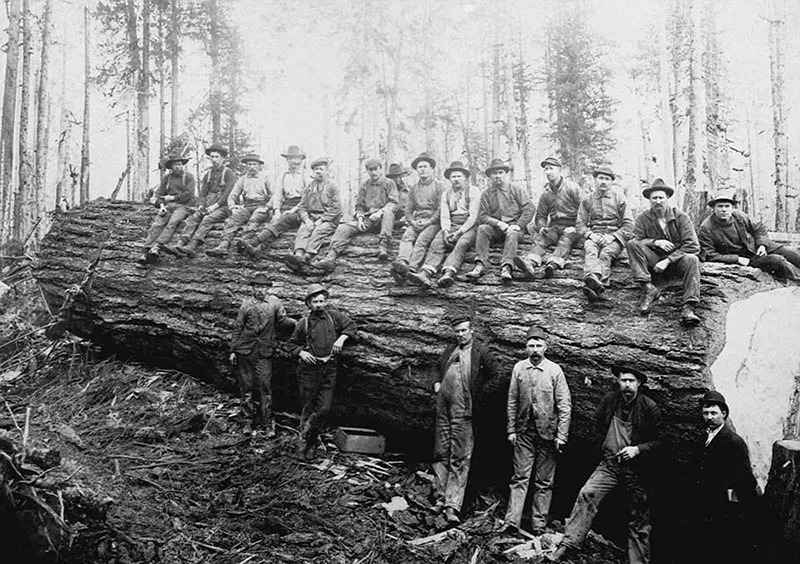
19. At the beginning of the 20th century in Red Lake County, Minnesota, a team of horses pulled a sled loaded with red and white pine logs

20. Horses were often the hardest workers in many logging camps, seen here pulling trees on a carrying vessel in 1890
